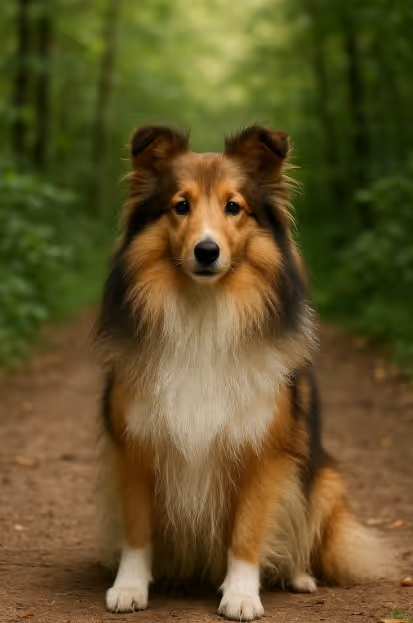The Shetland Sheepdog, affectionately known as the “Sheltie,” is an intelligent, affectionate, and agile herding breed from Scotland’s Shetland Islands. Renowned for their beautiful long coat, expressive face, and exceptional trainability, Shelties excel in obedience, agility, and herding trials while making loving family companions. They thrive in homes that can provide daily exercise, mental challenges, and plenty of affection.

The Shetland Sheepdog originated in the Shetland Islands of Scotland, where small, hardy dogs were bred to herd and guard sheep in the region’s rugged terrain. Likely developed from small working collies brought from mainland Scotland and crossed with spitz-type dogs, Shelties were valued for their intelligence, agility, and manageable size. Officially recognized by the Kennel Club (UK) in 1909 and the American Kennel Club in 1911, they have since gained worldwide popularity for their beauty and versatility.
A small to medium-sized, agile herding dog with a luxurious double coat.
High grooming requirements due to long coat.
Active and energetic, requiring daily physical and mental stimulation.
Exceptionally trainable and eager to please.
A balanced diet supports their active lifestyle and coat health.
Generally healthy but may be prone to some hereditary conditions.
Widely available through reputable breeders and herding breed rescues.
Are Shetland Sheepdogs good family dogs?
Yes, they are affectionate, intelligent, and excellent with children.
Do they bark a lot?
Yes, they are vocal watchdogs and may bark at movement or noise.
Do they shed much?
Yes, heavily during seasonal shedding.
Are they easy to train?
Yes, they are among the most trainable breeds.
Do they get along with other pets?
Yes, with proper socialization.
Are they hypoallergenic?
No.
How much exercise do they need?
At least 45–60 minutes daily.